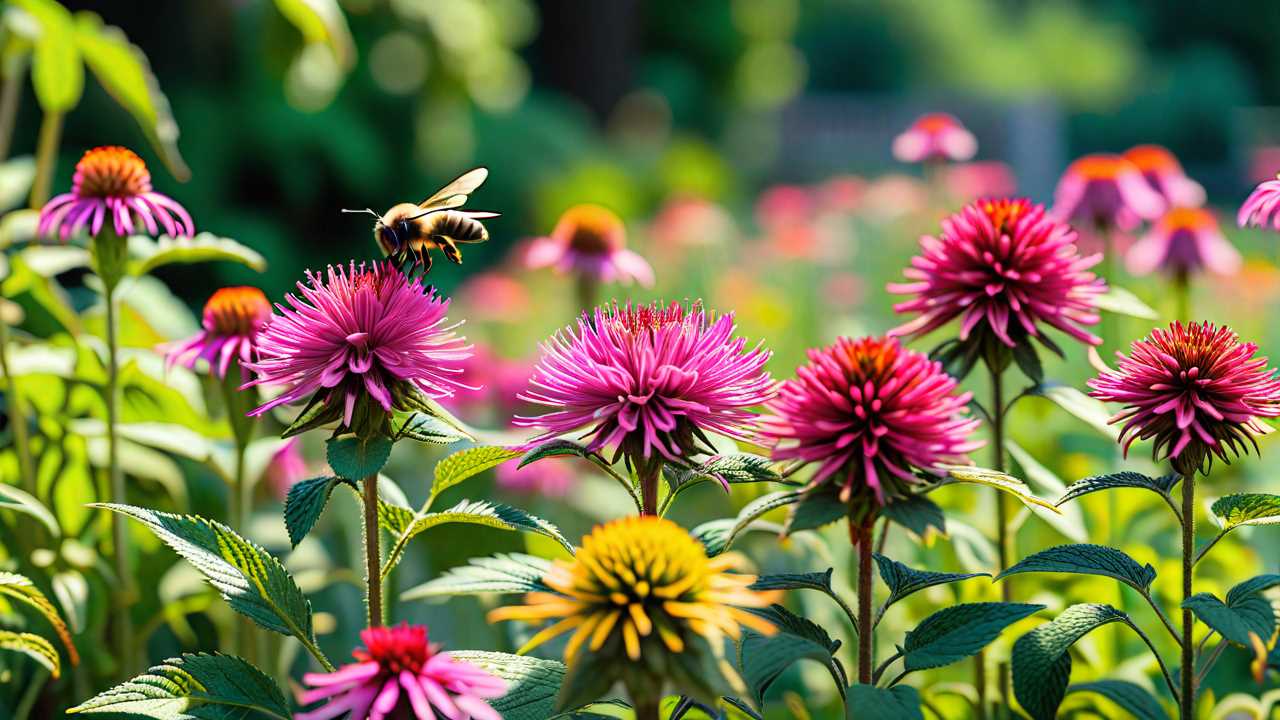
In the concrete jungle, creating a haven for pollinators is an admirable endeavor. By carefully selecting native plants that suit your urban environment, you can foster a thriving ecosystem right in your backyard. But what about the other essential elements that can truly make your pollinator garden a buzzing success? Let's investigate the key factors that go beyond just planting flowers and examine the intricacies of creating a pollinator paradise amidst the cityscape.
Selecting Native Plants
When creating a pollinator garden in the city, your first step is to carefully select native plants that will thrive in your local environment. Native plants have evolved to the specific conditions of your region, making them well-suited for the local climate, soil, and pollinators.
Before selecting your plants, research which species are indigenous to your area. Consider factors such as sunlight exposure, soil type, and moisture levels in your garden space.
Choose a variety of plants that bloom at different times throughout the year to provide a continuous food source for pollinators. Include a mix of flowers, shrubs, and trees to attract a diverse range of pollinating insects such as bees, butterflies, and hummingbirds.
Some popular native plant options include Black-Eyed Susans, Milkweed, and Bee Balm. These plants not only support pollinators but also add beauty and color to your garden.
Remember to plant in clusters or groups to make it easier for pollinators to locate the flowers. By selecting native plants thoughtfully, you can create a flourishing pollinator garden that benefits both wildlife and the environment.
Providing Water Sources
Selecting native plants is an essential first step, and now, moving onto providing water sources in your pollinator garden requires thoughtful consideration. Water is important for pollinators, so incorporating sources like birdbaths, shallow dishes filled with water, or even a small pond can attract and sustain them.
When setting up water sources, make sure they've landing pads or rocks for insects like bees to perch on while drinking. It's important to keep the water clean and fresh to prevent the spread of diseases among pollinators. Changing the water every few days and scrubbing the containers regularly will help maintain a healthy environment. Additionally, adding floating objects like corks or sticks can provide landing spots and prevent drowning.
Remember to place water sources in shaded areas to keep the water cool and prevent evaporation. By incorporating these thoughtful water sources, you can create a welcoming oasis for pollinators in your city garden.
Avoiding Pesticides
To maintain a healthy environment for pollinators in your garden, it's crucial to avoid using pesticides that can harm these beneficial insects. Pesticides, even those labeled as insecticides, aren't selective in their impact. They can harm not only harmful pests but also the pollinators crucial for your garden's ecosystem.
Instead of reaching for chemical solutions, consider using natural alternatives like neem oil, insecticidal soaps, or introducing beneficial insects like ladybugs or lacewings that prey on garden pests without harming pollinators.
When purchasing plants for your garden, opt for native species that are more resistant to local pests and diseases, reducing the need for pesticides. Implementing good gardening practices such as crop rotation, proper watering, and maintaining healthy soil can also help minimize pest issues naturally.
Additionally, practicing good garden hygiene by removing dead plant debris and weeds promptly can prevent pest infestations before they become problematic. By avoiding pesticides and embracing natural pest control methods, you can create a flourishing pollinator garden that supports a diverse community of beneficial insects.
Maintaining Your Garden
Keep your garden in good condition by regularly checking for signs of pests, diseases, and nutrient deficiencies to guarantee the health and vitality of your plants.
Here are some essential maintenance tips to make sure your pollinator garden thrives:
- Inspect Plants Regularly: Look for any unusual spots, holes in leaves, or wilting. Early detection of issues can prevent them from spreading.
- Water Wisely: Ensure plants receive adequate water, especially during hot weather. Be cautious not to overwater, as this can lead to root rot.
- Prune Dead Growth: Remove dead flowers and foliage to promote new growth and prevent diseases from spreading.
- Fertilize Appropriately: Provide the right nutrients for your plants by using organic fertilizers or compost. Avoid over-fertilizing, as this can harm pollinators and plants.
Frequently Asked Questions
Can I Create a Pollinator Garden on My Apartment Balcony?
You can definitely create a pollinator garden on your apartment balcony. Choose pollinator-friendly plants like lavender, coneflowers, and bee balm. Use containers with drainage holes, quality soil, and water regularly. Enjoy watching bees and butterflies visit your urban oasis.
What Are Some Creative Ways to Attract Pollinators to My Garden?
To attract pollinators to your garden, consider planting a variety of native flowers, using colorful blooms, providing water sources, and avoiding pesticides. Creating a diverse and welcoming habitat will entice beneficial insects to thrive.
How Can I Protect My Pollinator Garden From Urban Wildlife?
To protect your pollinator garden from urban wildlife, install fencing or netting, use natural deterrents like citrus peels or pepper spray, and avoid leaving out open food sources. Regularly inspect your garden for signs of wildlife intrusion.
Can I Use Artificial Plants in a Pollinator Garden?
Artificial plants have no benefit to pollinators and can't provide the essential nectar and pollen they need. Opt for real, native plants to support pollinators effectively in your garden. Don't compromise on their well-being!
Are There Any Specific Flower Colors That Attract More Pollinators?
Bright colors like purple, blue, and yellow attract more pollinators. Flowers such as lavender, bee balm, and sunflowers are popular choices. Planting a variety of blooms guarantees a diverse range of pollinators will be drawn to your garden.
 SportsHollywoodLifestyleFashionHome & GardenTrendsPrivacy PolicyTerms And Conditions
SportsHollywoodLifestyleFashionHome & GardenTrendsPrivacy PolicyTerms And Conditions
